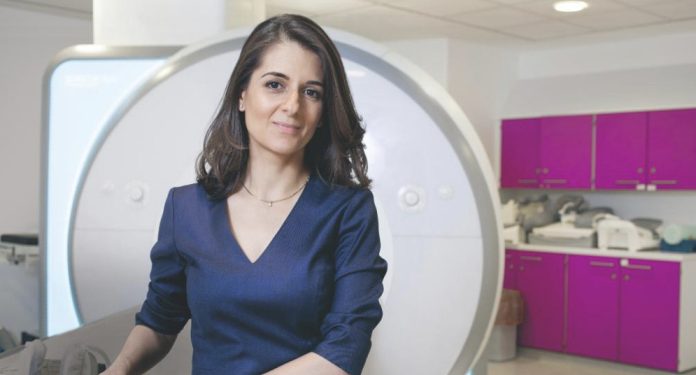Artificial intelligence (AI) could be around twice as accurate as a biopsy at grading the aggressiveness of some sarcomas, according to new research from The Royal Marsden NHS Foundation Trust and The Institute of Cancer Research, London.
Results from the RADSARC-R study, which have been published in The Lancet Oncology, suggest that a new AI algorithm could help tailor the treatment of some sarcoma patients more accurately and effectively than a biopsy, an invasive procedure which is currently standard practice. The research also suggests that the technology could help clinicians diagnose subtypes of the rare disease, speeding up diagnosis as a result.
Researchers believe the technique could be eventually applied to other cancer types too, potentially benefitting thousands of patients every year.
Soft tissue sarcoma is a type of cancer that develops in the body’s connective tissues, including fat, muscles, nerves and blood and lymph vessels. It is a rare cancer, with around 4,295 people in England diagnosed each year and over 50 different types.
This study focused on retroperitoneal sarcoma, a soft tissue sarcoma which develops in the back of the abdomen and, due to its location and rarity, is currently hard to diagnose and treat.
Researchers used the CT scans of 170 Royal Marsden patients with the two most common forms of retroperitoneal sarcoma – leiomyosarcoma and liposarcoma –to create an AI algorithm, which was then tested on nearly 90 patients from centres across Europe and the US.
They used a technique called radiomics to analyse the CT scan data, which can extract information about the patient’s disease from medical images, including data which can’t be distinguished by the human eye.
The model accurately graded the risk – or how aggressive a tumour is likely to be – of 82% of the tumours analysed, while only 44% were correctly graded using a biopsy.
The model also accurately predicted the disease type of 84% of the sarcomas tested – meaning it can effectively differentiate between leiomyosarcoma and liposarcoma – compared with radiologists who were not able to diagnose 35% of the cases.
By giving clinicians a more accurate and effective way of grading tumours, researchers hope this technology will improve the management of the disease and outcomes. For example, as high-grade tumours can indicate aggressive disease, this tool could help ensure high-risk patients are identified and get amplified treatment, while low-risk patients could be spared unnecessary treatments, follow-up scans and hospital visits.
It could also speed up diagnosis of the disease by supporting clinicians – who may never have previously seen a retroperitoneal sarcoma due to its rarity – in more accurately identifying the subtype.







